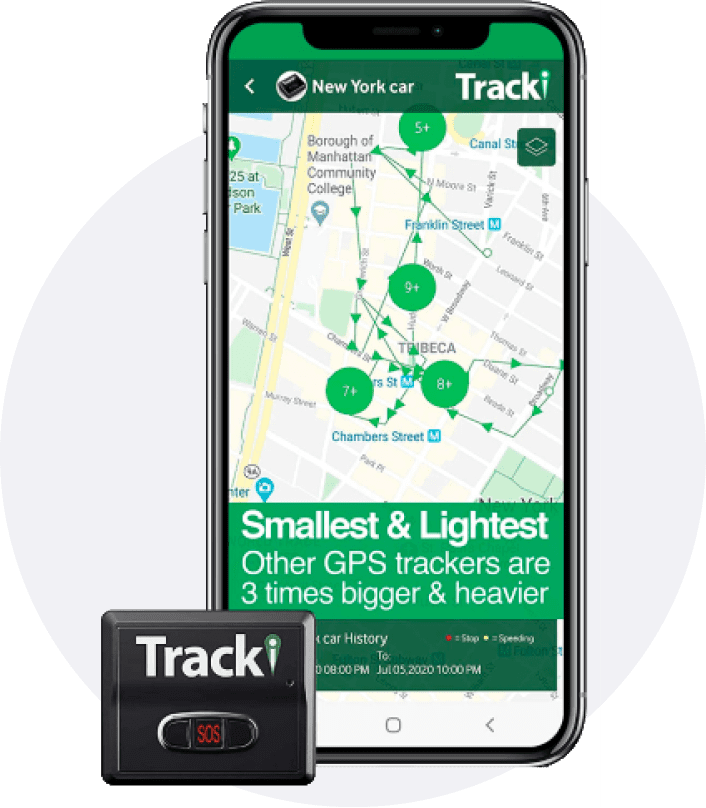Budget Friendly GPS Tracking Options: Discover the Right Solution for You
Budget Friendly GPS Tracking Options: Discover the Right Solution for You
Blog Article
Making Best Use Of Performance With GPS Monitoring: Methods for Fleet Management and Asset Tracking
In the world of fleet management and property tracking, the usage of GPS tracking systems has ended up being a foundation for improving functional performance and performance. As we check out the various techniques and strategies to make the most of efficiency with GPS tracking, a globe of possibilities opens up to redefine how companies manage their fleets and monitor their possessions.
Carrying Out Real-Time Monitoring Solutions
To take full advantage of functional effectiveness, companies can implement real-time radar that supply prompt location data for their possessions. By making use of GPS technology, organizations can obtain real-time understandings right into the location of their vehicles, tools, and other useful sources. This degree of exposure enables business to enhance operations, improve efficiency, and enhance general efficiency.
Real-time monitoring systems offer countless advantages for firms throughout numerous sectors. With the ability to keep an eye on properties continually, companies can optimize directing, routine upkeep better, and decrease the risk of burglary or loss. In addition, these systems make it possible for organizations to react without delay to any kind of unanticipated occasions or disturbances, ensuring marginal downtime and optimum effectiveness.
Carrying out real-time monitoring systems needs mindful preparation and factor to consider of certain service needs. Companies must choose the ideal modern technology provider, tailor the system to satisfy their requirements, and supply appropriate training to workers. By purchasing real-time monitoring solutions, services can remain ahead of the competition, deliver premium customer support, and accomplish lasting development in today's busy market setting.
Enhancing Path Preparation and Scheduling

One key method for optimizing path planning is to make use of historic data and real-time details to identify one of the most effective courses for cars. By analyzing past paths and considering aspects such as traffic patterns and distribution home windows, companies can produce routines that reduce unneeded quits and delays. Furthermore, carrying out dynamic directing capacities allows for modifications to be made in real-time based upon transforming conditions, ensuring that motorists constantly take one of the most effective path to their destination.
Enhancing Driver Performance and Security
Enhancing motorist efficiency and security is extremely important in ensuring the smooth and secure operation of a fleet. By using GPS tracking modern technology, fleet managers can keep track of chauffeur habits in real-time and offer immediate comments to promote risk-free driving methods. This consists of tracking speed limits, severe braking, acceleration patterns, and adherence to web traffic guidelines.
In addition, GPS tracking systems see this page can aid in recognizing chauffeurs who may need added training or support to improve their efficiency (gps tracking). By examining information on driving habits and patterns, fleet managers can apply targeted training programs to resolve certain areas of enhancement. This proactive strategy not only enhances general chauffeur efficiency but additionally adds to a much safer work setting for everyone included
In addition to performance surveillance, GPS monitoring systems can additionally improve driver security by offering emergency situation aid functions. In the event of a mishap or malfunction, chauffeurs can promptly send out distress signals, allowing fleet supervisors to react immediately and send off aid when required. Overall, incorporating GPS tracking technology right into fleet monitoring strategies is critical for enhancing vehicle driver efficiency and guaranteeing the safety and security of both drivers and assets.

Utilizing Geofencing for Boosted Protection
Taking full advantage of fleet safety surpasses checking chauffeur performance and safety and security; one efficient approach is through the critical use geofencing innovation. Geofencing permits fleet managers to establish online borders or geozones around particular areas, enabling them to get real-time alerts when automobiles enter or exit these assigned locations. By establishing up geofences around high-risk places such as construction websites, unapproved locations, or perhaps client areas, fleet supervisors can boost protection measures and mitigate potential risks.
Geofencing not only boosts security yet additionally enables quick reaction times in case of unauthorized lorry use or theft. In the event of a breach, notifies can be sent to fleet managers, enabling them to take immediate action to situate and recover the car. In addition, geofencing can aid in monitoring vehicle activity during off-hours, guaranteeing that automobiles are not being utilized for unauthorized purposes.
Incorporating GPS Data for Strategic Decision-Making
Utilizing GPS data assimilation is important for informed strategic decision-making in fleet management operations. By incorporating GPS information right into fleet administration systems, organizations can get important insights into their procedures, leading to extra effective routes, enhanced driver habits, and far better overall efficiency. Through the assimilation of check my site GPS data, fleet supervisors can track lorry locations in real-time, display fuel usage, and assess vehicle driver performance metrics such as rate, idling time, and severe stopping.
Additionally, incorporating GPS information allows for the optimization of paths based upon web traffic problems, weather patterns, and other external elements, assisting to minimize distribution times and functional expenses. By evaluating historic GPS data, fleet managers can identify trends, patterns, and areas for enhancement, allowing them to make data-driven choices that boost performance and simplify procedures.
Final Thought
In verdict, the execution of general practitioner radar can significantly improve efficiency in fleet management and property surveillance. By making use of real-time tracking, maximizing course planning, improving motorist performance, utilizing geofencing for safety Web Site and security, and integrating GPS data for strategic decision-making, companies can achieve and improve procedures cost financial savings (gps tracking). These strategies enable companies to streamline procedures, boost performance, and inevitably take full advantage of the overall effectiveness of their operations
In the world of fleet monitoring and property surveillance, the application of General practitioner monitoring systems has actually ended up being a cornerstone for enhancing functional effectiveness and productivity. As we discover the numerous techniques and strategies to make the most of performance with GPS monitoring, a globe of possibilities opens up to redefine how companies handle their fleets and monitor their possessions.
By making use of General practitioner tracking technology, fleet managers can keep an eye on chauffeur habits in real-time and provide immediate comments to promote risk-free driving techniques. Via the combination of GPS data, fleet supervisors can track lorry areas in real-time, screen fuel usage, and assess driver performance metrics such as speed, idling time, and severe stopping.
In conclusion, the implementation of GPS tracking systems can considerably improve efficiency in fleet administration and possession surveillance.
Report this page